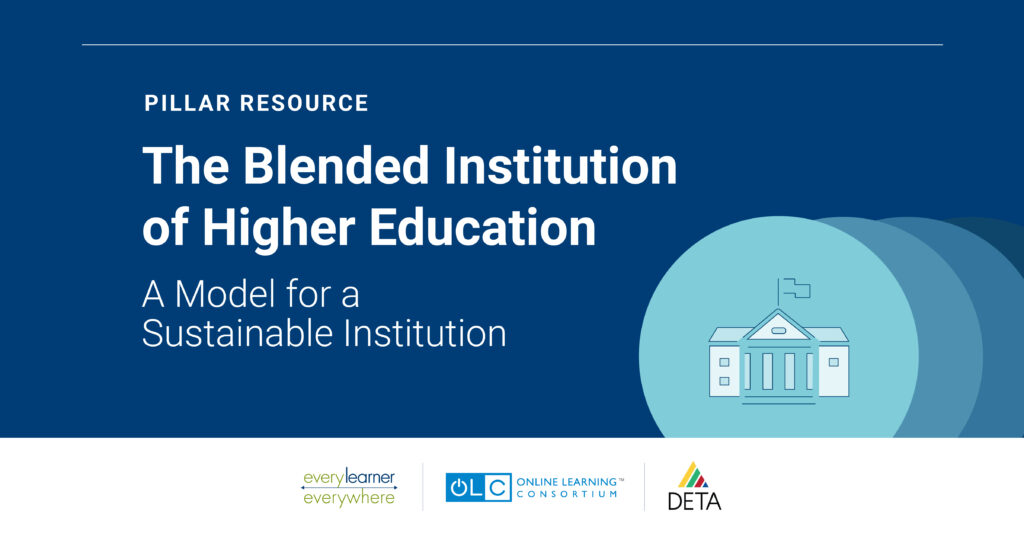
08 Dec A New Institutional Model, The BIHE
A guide, The Blended Institution for Higher Education: A Model for a Sustainable Institution, was developed in partnership with Every Learner Everywhere and the Online Learning Consortium
Previously, we shared our resource, Planning for a Blended Future, focusing on research-based strategies that faculty and instructors could use to improve the quality of the courses in response to the pandemic and moving forward. Now, we share our new resource, The Blended Institution for Higher Education, that informs strategic efforts to sustain into the future. It is time for us to reflect, assess, and plan.
-What did we learning from our response to the pandemic last year?
-Where are we right now?
-Where do we want to be a few years from now?
While thinking about the external factors that are influencing our institutions, we must start shifting our vision with a keen focus on students needs, ensuring equitable experiences for all students, and weaving consideration for reasonable tech, time, and place throughout every service, support, and experience of students. Rethinking the priorities our colleges and universities can move us towards greater sustainability, if and only if we view students as the nucleus of our institutional systems and design our universities and colleges around their needs and their success. As we design outwards from students – who they are, what experiences have they had – we can better evaluate and improve each set of interactions within our organizations for more efficient and effective operations with improved outcomes at all levels.
An excerpt:
The Blended Institution of Higher Education: A Model for a Sustainable Institution presents a vision for an innovative institutional model informed by research and analyses. It is a model that moves beyond the proven blended course and program models to an institutional-level model. Like blended learning, the blended institution of higher education (BIHE) positions students and their success at the center. It prioritizes equity to ensure success for all students — in particular, historically minoritized and other traditionally underrepresented students. The BIHE combines an array of technological and process elements to blend and thoughtfully integrate instruction, learning, support, and services for students. Blending these elements ensures relevant outcomes — or student success — align with the needs of the students while considering external factors, including needs of the evolving workforce and society.
You can download the resource directly at the ELE website, or feel free to contact us at detaresearch [at] gmail.com.
The Blended Institution of Tomorrow: Prioritizing Equity in Higher Ed


No Comments